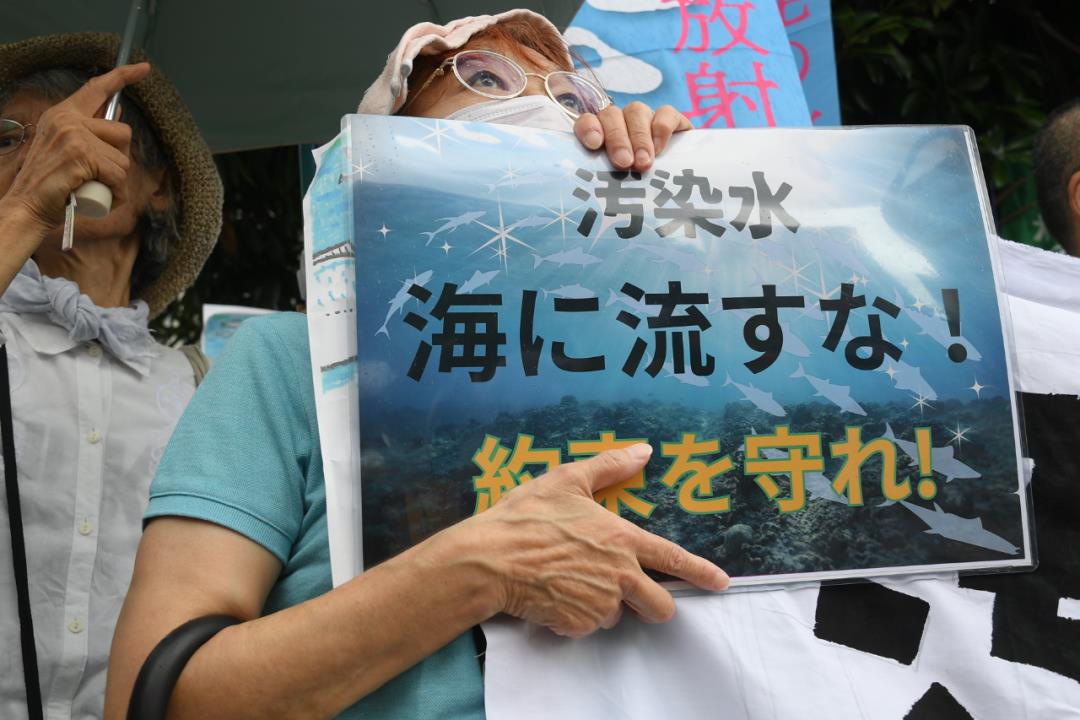◎ Science and Technology Daily reporter Fu Xiaobo Hao Xiaoming Wang Chun
On August 24th, despite domestic and international opposition, the Japanese government insisted on launching the plan of discharging nuclear polluted water into the sea, which attracted global attention. How will nuclear polluted water spread in the ocean? What will be the consequences? How to deal with it? In response to these social concerns, the Science and Technology Daily reporter interviewed a number of scholars and experts.
Nuclear pollution water will spread to the whole world.
In 2011, after the Fukushima nuclear accident in Japan, China started the emergency monitoring and assessment of the marine environment in the western Pacific for the first time. Yu Wen, a researcher at the School of National Security and Emergency Management of Beijing Normal University who participated in this survey, said that during this seven-year follow-up monitoring, the research team found that,Three months after the Fukushima nuclear accident, nuclear pollutants spread to the high seas 600 kilometers away from Fukushima, and the content seriously exceeded the standard.Eighteen months after the accident, the existence of nuclear pollutants was detected in the southeast waters of Taiwan Province. According to estimates,After entering the marine environment, these nuclides will pass through ocean currents in 8-mdash; Gradually spread to all sea areas in 10 years.
Drawing on these observation data and ocean dynamics, Yu Wen predicted that the nuclear polluted water discharged from Japan would quickly spread to the whole ocean system by ocean currents.And enter China’s waters in about one and a half to two years.
"Nuclear polluted water is transported and diffused by ocean currents, and some radioactive substances will be absorbed by marine life." Yu Wen said that the sea does have a certain dilution effect.However, Japan’s 30-year-old plan to discharge the sea is still uncertain.Considering the fragility of the environment and ecology, we need to be cautious.
The consequences are uncertain and unpredictable.
"There are many ways to treat nuclear polluted water, such as evaporation, electrolytic discharge and underground burial, but Japan has chosen the lowest-cost sea discharge scheme, which is extremely irresponsible." Zhang Yanxie, a think tank expert and law school professor at Dalian Maritime University, said that what the international community is most worried about at present is the ecological damage caused by nuclear radioactive elements entering the marine environment.
Chen Xinjun, dean of the School of Marine Science of Shanghai Ocean University, believes that the pollution of nuclear elements produced by different levels of nuclear accidents is different. The Fukushima nuclear accident is listed as the highest level 7 in the international nuclear event classification table, and the pollution degree of nuclear sewage produced by it cannot be underestimated.
"Tritium may not be the most dangerous."Gao Zhiguo, chief expert of think tank of Dalian Maritime University, said that Japan has been misleading that "the problem lies only in tritium", but many scientists in the world have a consensus that nuclear polluted water contains as many as 64 kinds of nuclear radioactive elements, and more than 70% of them are out of the standard, so it is difficult for multi-nuclide equipment to completely treat them.After these radioactive elements enter the marine environment, carbon -14 and iodine -129 are the most harmful to human beings and marine organisms, of which the half-life of carbon -14 is about 5000 years, and the half-life of iodine -129 is longer, while carbon -14 will gather in marine organisms, and its abundance or concentration may be 50 times that of tritium.

On August 22nd, the Japanese people held an emergency rally in front of the Tokyo Prime Minister’s residence to protest against the government’s disregard of public opinion to start discharging nuclear polluted water into the sea. Xinhua News Agency reporter Feng Wuyong photo
Many interviewed experts and scholars said that after nuclides are integrated into marine ecology, it involves complex and long-term biogeochemical processes, and at present, scientists have little systematic research and data accumulation on it.Japan’s move is unprecedented, and its harm is difficult to assess so far, with uncertainty and unpredictability.At present, it is urgent to carry out international cooperation and long-term follow-up research on marine ecosystem and marine life.
Can imported seafood be purchased?Mainly depends on the source.
In the future, can sea salt and seafood be safely eaten? Zhang Yanxuan said that the local grouper and Xu Pingyi in Fukushima had been detected to contain excessive radioactive elements, so if the source of seafood is close to Fukushima, we should be vigilant.
Chen Xinjun said that after the discharge of nuclear polluted water, the impact on fish in the waters around Japan is the greatest. In addition, fish, sedentary fish and migratory fish in different water layers are affected differently."The seafood circulating in China’s market must be strictly tested and safe, and China consumers can rest assured."
At present, China has completely suspended the import of Japanese aquatic products, and after the Fukushima nuclear accident, China has included the monitoring of radioactive substances in food into the scope of food safety risk monitoring.
关于作者